Featured image: Creative Commons License by Bertrand
Kim Gordon; vocalist and bass and guitar player for the prominent alternative noise rock band Sonic Youth.
Until disbanding in 2011, Sonic Youth were trailblazers through the noise rock scene and famously “redefined what rock guitar could do”.
Known for their unorthodox tunings, the band also prepared their guitars with objects to alter their timbres.
Sonic Youth’s dynamic yet abrasive and dissonant sound reflects the transient avant-garde music and visual arts scene, “No Wave”, a movement developed in downtown New York post-’70s, where Kim Gordon was born and began an art career in the early ’80s.
The sound
The sound of No Wave was often disparate, but there were some common elements throughout the scene.
Abrasive atonal sounds; repetitive, driving rhythms; and emphasising musical texture over melody: these elements are suffused throughout Sonic Youth’s discography.
Kim, herself, notes that “there’s something about music and electricity, and the free-flowing, less-contained aspect – it’s like being in the ocean.”
There, amidst the depth of that sound is the ecstatic, driving force of Kim Gordon’s bass guitar.
Kim’s playing style is intense and often consists of hypnotically thumping a root note for an extended period. This leaves plenty of space for the rest of the band to flex their instruments, before finally breaking away and creating an overwhelming relief.
So how can you steal such a distinctive sound?
Let’s point you in the right direction.
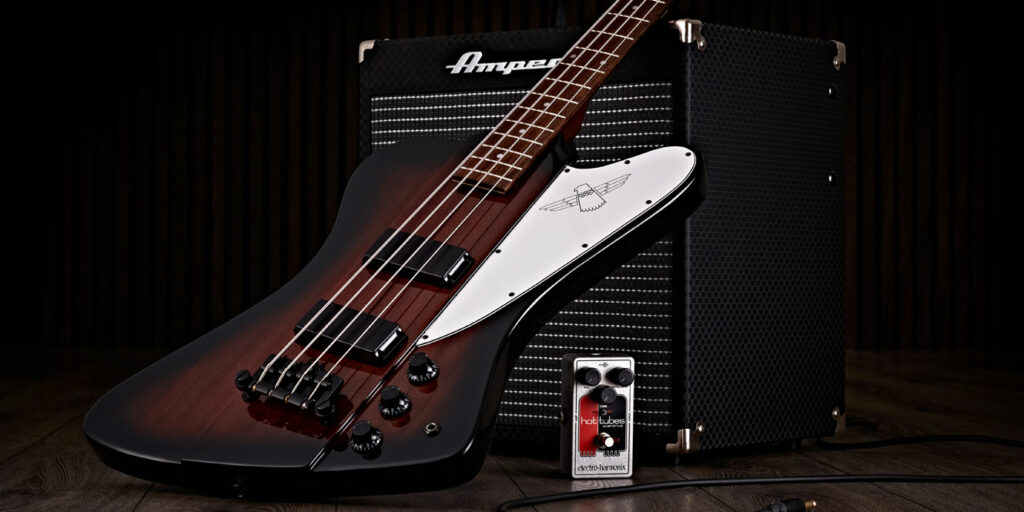
The bass
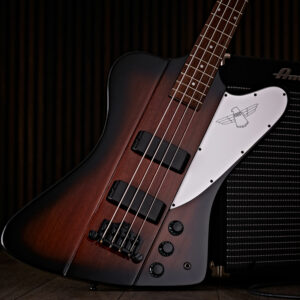 Kim adopted a ’76 Gibson Thunderbird in 1988. It was used for the recording of Dirty (1992) and its subsequent tour shows. She also used it whilst recording Sonic Nurse (2004) and for the entirety of the Daydream Nation shows (1989).
Kim adopted a ’76 Gibson Thunderbird in 1988. It was used for the recording of Dirty (1992) and its subsequent tour shows. She also used it whilst recording Sonic Nurse (2004) and for the entirety of the Daydream Nation shows (1989).
The Gibson Thunderbird suited the noise-saturated timbres of Sonic Youth down to a tee.
Built with a set of TB Plus humbucking pickups, the Thunderbird produces serious low-end that growls and roars. And it comes alive when the two volume and single tone controls are turned up to the full, yet it still leaves room to dial it back when necessary.
The striking shape lacks subtlety – fitting for Sonic Youth’s image – and Kim had all sorts of writing on hers.
It’s now nearly six decades since the Gibson Thunderbird IV was first released, so can cost an arm and a leg these days
Luckily for you, Gibson’s sister company, Epiphone, released the Thunderbird E1 at an affordable price.
Enjoy superb intonation from the Tune-o-Matic bridge and claw tailpiece, and experience enhanced resonance and sustain thanks to neck-through construction.
Better still, it features a high-quality manufactured mahogany body and a comfortable rounded bass profile neck with a pau ferro fretboard.
There are some differences; the Epiphone’s scale length is half an inch shorter and it has a slightly different set of pickups – but for a fraction of the price, you can’t go wrong.
Shop now | Epiphone Thunderbird E1, Vintage Sunburst
The fuzz
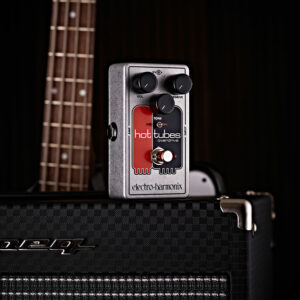 The Electro Harmonix Hot Tubes made appearances on Kim’s pedalboard between 1998 and 2009.
The Electro Harmonix Hot Tubes made appearances on Kim’s pedalboard between 1998 and 2009.
To capture the dynamic nature of the Sonic Youth style, the bass has to be able to punch through a mix filled with noise, but also retain the potential to take a step back.
It’s overdrive that’s key to the intensity of her bass tone.
Hot Tubes unleashed all of the in-your-face punch of fuzz and grit that carried the aggressive spirit of No Wave and punk influences through Kim’s sound.
Boasting range and flexibility, Hot Tubes is capable of saturating your notes with a gentle raspiness or pumping your tone with a full-blown monstrous crunch.
Electro Harmonix has brought this legendary pedal back to life with a modern remake.
A loving homage to the much sought-after 1970s original, the Hot Tubes recreation offers all the authentic CMOS circuitry that grants you access to a vast range of tube-like tones.
Furthermore, it also features a tone stack switch to cut your sound in a totally new direction, which is great for versatility and paramount to Kim’s sound.
A three-control knob layout means Hot Tubes is straightforward and easy to use.
All these features are packed into a compact housing that will fit on any pedal board.
Shop now | Electro Harmonix Hot Tubes Distortion
The delay
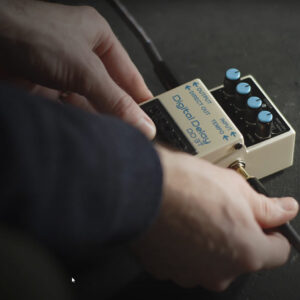 By 2002, Kim had incorporated the classic Boss DD-3 into her pedalboard setup.
By 2002, Kim had incorporated the classic Boss DD-3 into her pedalboard setup.
Hailed as the first-ever digital delay pedal, the DD-3 is renowned for its warm, well-rounded tone and straightforward usability.
Delay really intensified the free-flowing, electric sound of Sonic Youth’s massive noise soundscape, building noise over time to saturate the mix with musical texture.
The original Boss DD-3 can be hard to get your hands on these days, but Boss has reincarnated the legend with a contemporary remake: the Boss DD-3T.
This rejuvenated version is designed with identical sonic circuitry and controls to the original, so you get the same sound as that of Kim Gordon.
Whilst retaining that authentic, distinctive sound, it also has improved functionality that makes it easier than ever to produce stunning delay.
Delay times stretch from 12.5 to 800ms, and you can tap in delay tempos using the onboard switch.
Combined with three delay subdivisions, the DD-3T offers both range and flexibility.
What’s more, a relocated direct output jack next to the main output makes connecting the pedal in a wet/dry setup hassle-free.
Shop now | Boss DD-3T Digital Delay Pedal
The amp
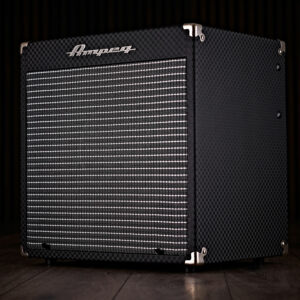 As far back as 2002, Kim used the Ampeg SVT-4 Pro Head with 8×10″ Ampeg cab combo to achieve unprecedented grit and power.
As far back as 2002, Kim used the Ampeg SVT-4 Pro Head with 8×10″ Ampeg cab combo to achieve unprecedented grit and power.
Kim relied on this amp combo as Sonic Youth toured the world, playing big-ticket events such as France’s Rock En Seine Festival.
However, accurately recreating this amp setup can quickly break the bank.
Instead, we suggest the Ampeg Rocket Bass 108.
The Ampeg Rocket Bass 108 lets you rumble through the mix with 30W of booming bass power.
Use the Ampeg legacy preamp and SGT overdrive combo for an unmistakable crunching tone.
The streamlined size and lightweight design of the Rocket Bass ensure you can travel from gig to gig with ease, making every practice, performance, and studio session effortless.
The Ampeg Rocket Bass also comes with a number of modern features, such as MP3 integration so you can practise to your favourite tracks.
Shop now | Ampeg Rocket Bass 108
Final thoughts
Sonic Youth was a dynamic band and their gear reflects this as it constantly evolves, just as their sound did.
This list is just a snapshot of some of the gear that Kim Gordon actually used during her time with Sonic Youth.
So if you want to steal the sound of Kim Gordon, this is a good place to start.

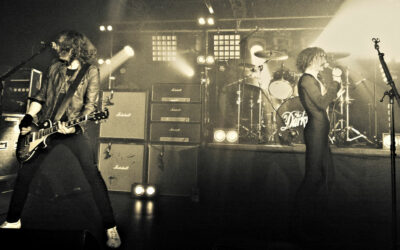
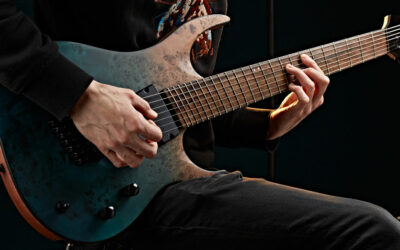
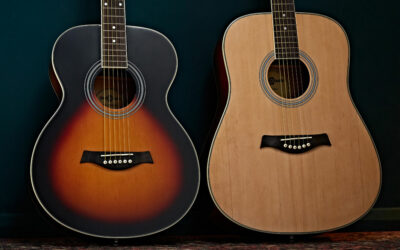

0 Comments